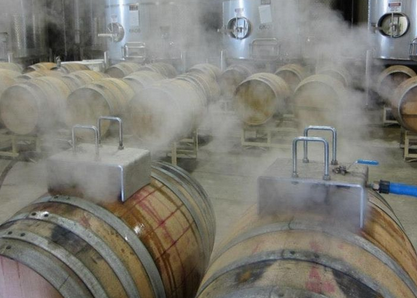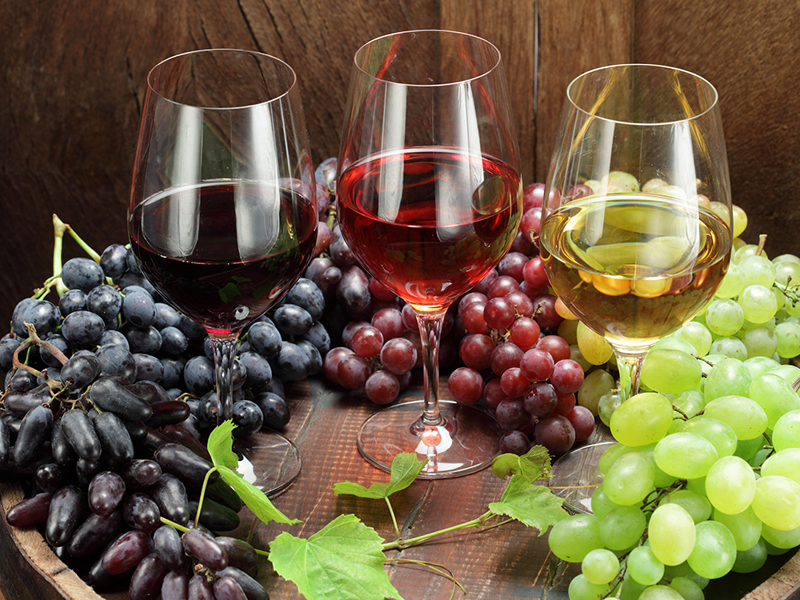The Sanitation Cycle
 The winemaker has many cleaning and purifying systems to pick, yet there is constantly one steady right now the sanitation cycle.
The winemaker has many cleaning and purifying systems to pick, yet there is constantly one steady right now the sanitation cycle. - Clean everything before use.
- Sanitize everything before use.
- Use everything.
- Clean everything after use.
- Sanitize everything after use.
- Air dry and store everything.
What is the "Everything" in the Sanitation Cycle?
Recognizing what should be cleaned and disinfected is straightforward; for the most part, anything that interacts with the must or the wine during winemaking should be sterilized.
- Your Hands
- Fermenter holder and top
- Any blending hardware, spoons
- Measuring cups
- Hydrometer and test containers
- Bottling wands or frameworks
- Racking sticks
- Wine cheat
- Siphon bars and hoses
- Carboy
- Bung and sealed area
- Thermometer
- Wine bottles
What are the Approved Sanitation Methods for Winemaking?
There are numerous techniques to keep your gear clean, underneath the most widely recognized strategies are laid out.
Bubbling
The most fundamental approach to disinfect hardware is to heat up your gear in water. No synthetic substances are required, and all the winemaker needs is a compartment sufficiently enormous to hold the hardware, water, and a warmth source. In case you're simply beginning in winemaking, this may appear to be a simple and less expensive alternative, yet we don't prescribe utilizing this system. Without a doubt, it's simple bubble water on your stove to make pasta, however when you have to include each cylinder, mixing pole, and jug to the bubbling pot, you will before long understand that your pot is excessively little and you have to buy a bigger holder. It's simpler to buy synthetic concoctions that have been made precisely for the procedure.
- Advantages: no synthetic substances are required, effectively open, water is reasonable
- Disadvantages: tedious, huge compartment for bubbling, consume danger
Chlorine
Chlorine, as family unit dye, is effectively open and is a decent cleaner and disinfectant. It goes about as a decent glass gear sanitizer, however ought not be utilized on plastic hardware. Since chlorine can be consumed by the plastic, undesired flavors will be created in your wine. Also, in the event that you are utilizing it on glass gear, at that point you have to flush on numerous occasions and utilize extensive measures of boiling water after sanitation. Winemakers will in general use chlorine blanch in crises just, when they can't get to other progressively wanted sanitizing synthetics.
- Advantages: promptly accessible in type of family unit blanch, economical
- Disadvantages: can use on plastic, ruins garments, erodes hardened steel
Iodophor
Iodophor is utilized by the nourishment administration industry and restorative industry to sterilize hardware. It is an iodine cleanser, antiseptic and sanitizer. On the degree of utilization common sense, it is a no-wash sanitizer and generally speaking exceptionally simple to utilize. For instance, when utilizing an Io-Star Iodophor Sanitizer, you should utilize a ¼ ounce for each 2 ½ gallons of water for a 12.5 ppm arrangement. At this degree of fixation, you can add your gear to the arrangement and it takes roughly 10 minutes to disinfect. At that point permit the hardware to trickle dry for an additional 10 minutes before utilizing.
- Advantages: affordable, no-flush sanitizer
- Disadvantages: lethal in high fixations, stains fabrics, skin
Phosphate Based Sanitizers
At the point when somebody calls into Quality Wine and requests exhortation on a disinfecting arrangement, the main technique we allude is a corrosive based item - Star San Acid Sanitizer for Surface Sanitation. This arrangement is a no-wash sanitizer that extremely easy to utilize and keep up. It is produced using a nourishment grade phosphoric corrosive, which is alright for individuals and nature. Furthermore, in light of the fact that it is unscented and flavorless, not at all like chlorine fade technique, your wine won't be influenced with off-flavors. While sanitizing your hardware, it just should be in the answer for two minutes. In addition, the arrangement is reusable; it can will stay compelling for up to three to about a month in a fixed compartment.
- Advantages: no-wash sanitizer, brisk disinfecting time
- Disadvantages: dangerous in high fixations, wore defensive attire
Potassium Metabisulfite Powder
This strategy is told in the Winexpert Kits. Potassium metabisulfite purifies the gear by repressing microscopic organisms and wild yeast. At the point when joined with water, it discharges sulfur dioxide, which is an incredible germ-free. Subsequent to adding the powder to water, you will see a solid sulfur smell and individuals oversensitive to sulfites might be influenced by its intensity. This technique is viewed as a financially savvy disinfecting flush, in light of the fact that no extra washing with clean water is required.
- Advantages: Long timeframe of realistic usability, efficient, no flushing required
- Disadvantages: Needed precise estimating aptitude, a few people are hypersensitive to sulfites
Whatever cleaning operator you choose to use during your winemaking procedure, it's imperative to never get sluggish during the sanitation cycle.





